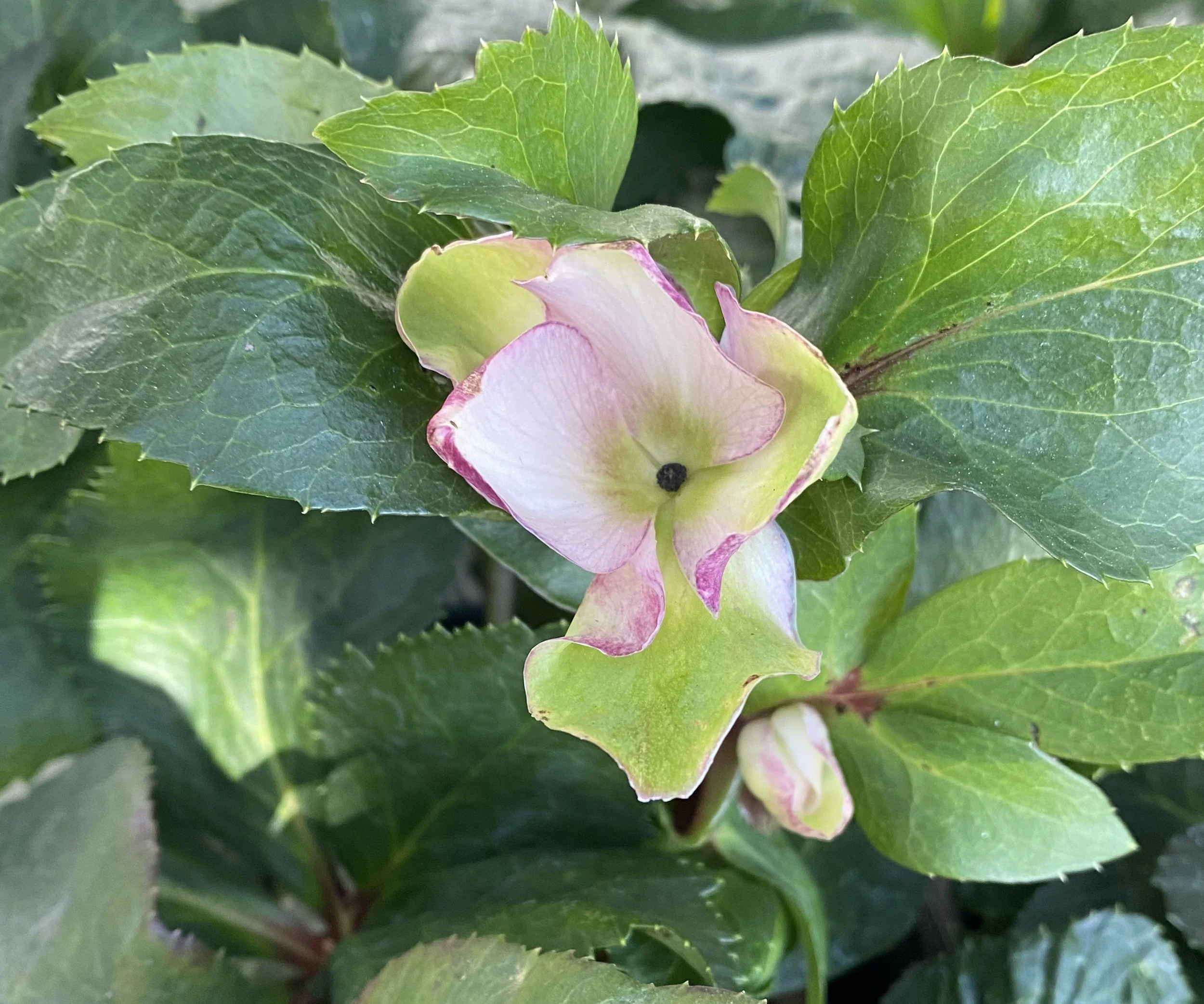Winter Blooms
Perennial and Shrub Showstoppers
Hellebores (Lenten Roses) are a garden favorite, often blooming from late winter into early spring. Their nodding, cup-shaped flowers come in shades of white, pink, purple, and even deep maroon.
Camellias are another winter delight, with glossy evergreen leaves and elegant flowers that appear from November through March, depending on the variety. Varieties we just got in include Hot Flash, October Magic Ivory, High Fragrance, and April Tryst!
Hamamelis (Witch Hazel) and Daphne odora (Winter Daphne) are unbeatable if you’re after fragrance. Witch hazel’s spidery yellow blooms unfurl on bare branches, while daphne fills the garden with a sweet scent that carries on the cold air.
Edgeworthia chrysantha (Paperbush) are long lived deciduous shrubs. Another standout, with silver buds that open into clusters of golden, they offer fragrant flowers just when you need them most. The bark is traditionally used in Asia to make high-quality paper — hence the name Paperbush!
Erica carnea (Heathers) Give the longest and brightest pink and white blooms when planted in full sun. Lightly shear these shrubs after blooming to keep plants tidy and encourage fresh growth.
Cold-Hardy Annuals
Pansies and Violas are frost hardy and can even bloom in light snow! The name “pansy” comes from the French word pensée, meaning “thought” to symbolize remembrance and love in the language of flowers. To keep your flowers coming and to prevent leggy growth, make sure to deadhead spent blooms often.
Snapdragons and Calendula can also tolerate cooler weather, offering vibrant color when most plants are dormant. Calendula have edible petals and are fun to sprinkle on salads or put in a cozy warm winter tea. Snapdragons make a great cut flower if you make sure to purchase the non dwarf varieties and space them 9 inches apart. Cut stems while half of the petals are still closed up to increase vase life.
Early-Blooming Bulbs
Snowdrops are often the first flowers to bloom in late winter/early spring. They can be used in borders or under trees because they thrive in full sun or partial shade. Make sure to let the foliage die back after flowering to strengthen the bulbs for next year!
Crocuses are pollinator magnets, offering some of the first nectar of the year for bees! Plant their corms in fall about 3 inches deep in a rock garden or along a border.
Eranthis hyemalis (Winter Aconites) are among the first bulbs to bloom, sometimes pushing through snow to announce spring’s arrival. They are Perennial tubers that self-seed and form cheerful colonies. Plant the tubers in fall and keep soil consistently moist during establishment.
Iris reticulata (Dwarf Iris) also flowers early, with striking purple and blue tones that brighten bare garden beds. They are perennial bulbs (technically a rhizome-like bulb) and grow 4-6 inches tall.


